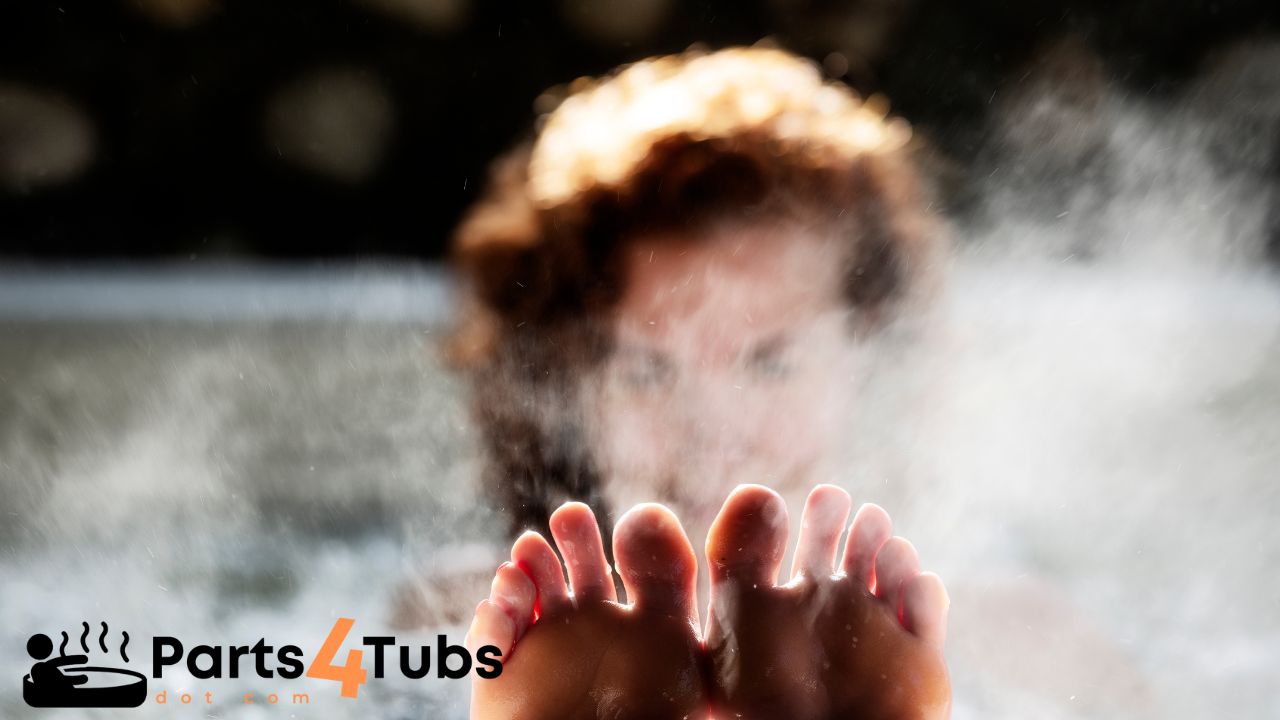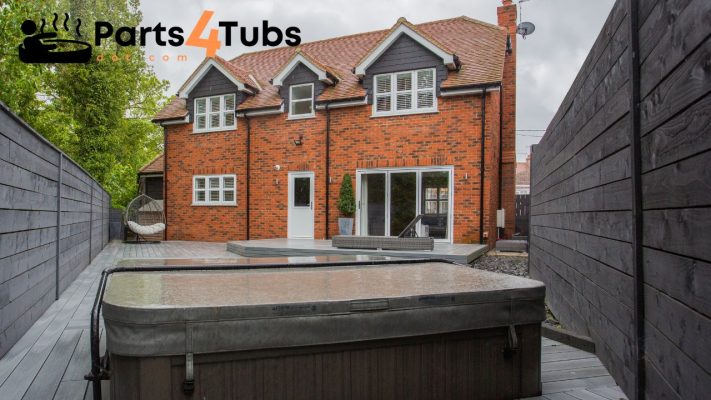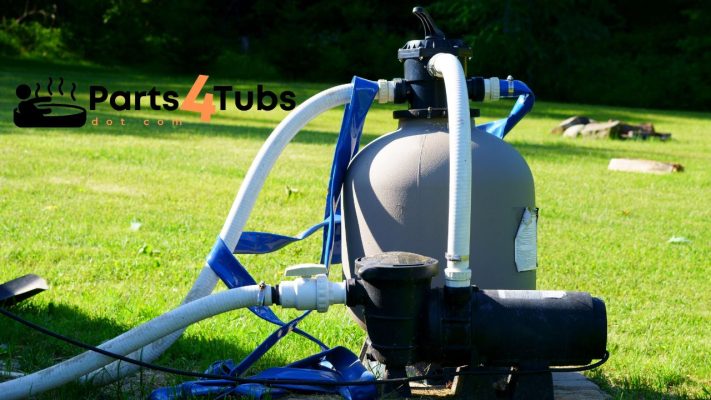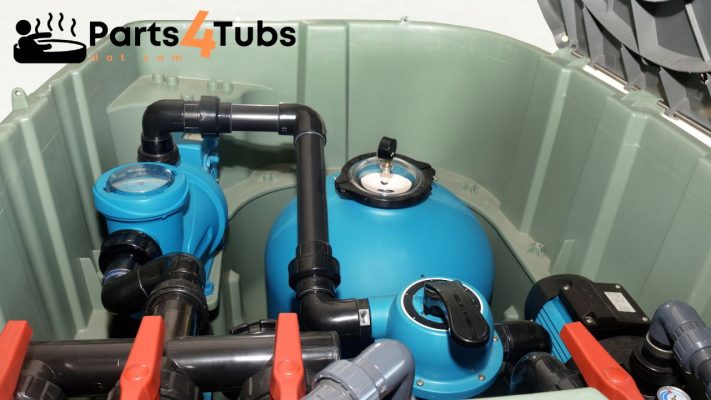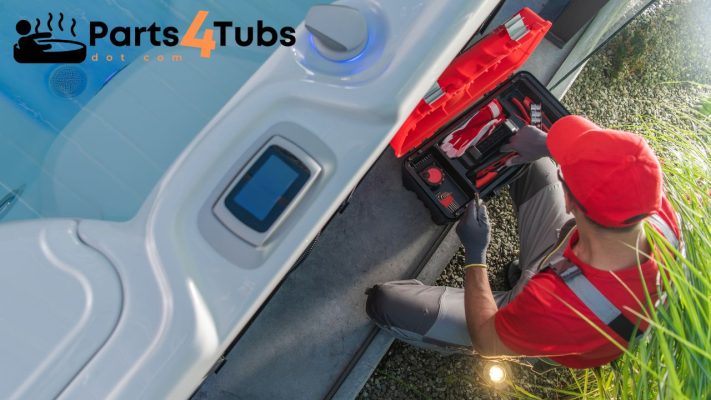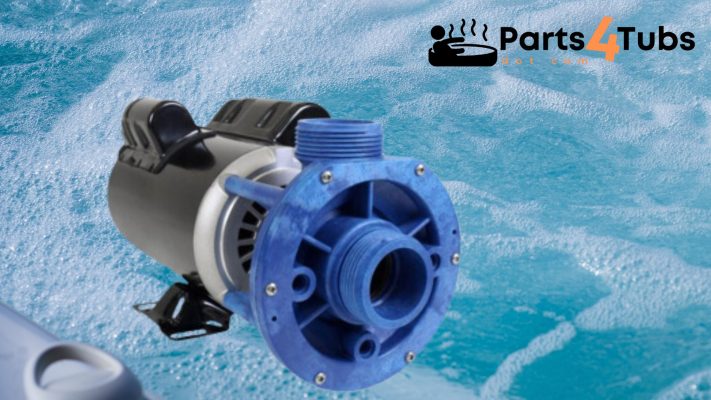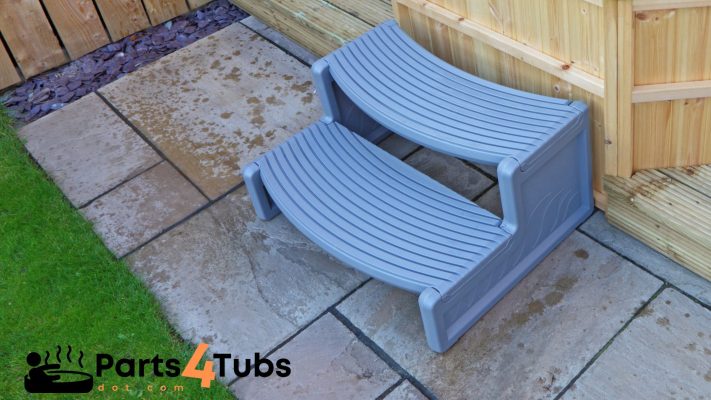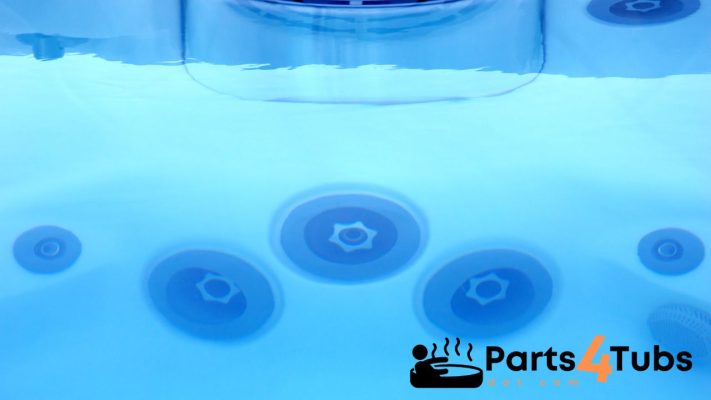Hot Tub Parts Related
Heating a Hot Tub – The Ultimate Guide – Everything You Need To Know.
Welcome to my ultimate guide on heating a hot tub! As a hot tub design consultant and the proud founder of Parts4Tubs.com, your go-to online superstore for all your hot tub needs, I’m excited to share my expertise on hot tub heating with you.
Maintaining the right water temperature is crucial for a relaxing and enjoyable hot tub experience. In this comprehensive article, we’ll explore everything you need to know about heating your hot tub effectively and efficiently.
From understanding the heating mechanisms to optimizing heat-up times and energy consumption, we’ll cover it all. So, whether you’re a seasoned hot tub owner or considering getting your first one, this guide will equip you with the knowledge to create a perfectly heated oasis in your own backyard. Let’s dive in and uncover the secrets to achieving your ideal hot tub temperature!
What is the most common way of heating a hot tub?
The most common way of heating a hot tub is through an electric heater, which is typically integrated into the spa pack controls of the tub. This type of heater is widely used in hot tubs due to its convenience, reliability, and effectiveness in maintaining desired water temperatures.
The electric heater operates by utilizing electrical energy to heat a heating element, which then transfers the heat to the water in the hot tub. The temperature can be adjusted and controlled through the hot tub’s control panel, allowing you to customize your soaking experience.
Electric heaters are known for their efficiency and ability to heat the water in all conditions, ensuring you can enjoy your hot tub all year round. However, there are some alternative heating methods so let’s take a look at these.
What are the alternative ways of heating a hot tub?
When it comes to heating a hot tub, there are several alternative methods to consider apart from electric heaters. Let’s explore some of the most common options along with their pros and cons:
Gas Heaters:
Gas heaters utilize natural gas or propane as a fuel source to heat the water. They offer rapid heating and are highly effective in maintaining hot tub temperatures, even in colder climates. However, they can be more expensive to operate compared to electric heaters, and the cost of gas or propane can vary.
Propane Heaters:
Similar to gas heaters, propane heaters use propane as a fuel source. They are a popular choice for hot tub owners who don’t have access to natural gas lines. Propane heaters provide quick heating and are often more energy-efficient than electric heaters. However, like gas heaters, they can be costly to operate due to the fluctuating prices of propane.
Air Source Heat Pumps:
Air source heat pumps utilize the surrounding air to extract heat and transfer it to the hot tub water. They are known for their energy efficiency and can significantly reduce operating costs compared to electric or gas heaters. However, their performance may be affected in extremely cold climates, and they may take longer to heat the water.
Heat Exchangers:
Heat exchangers work by transferring heat from an external source, such as a boiler or solar panels, to the hot tub water. They offer energy-efficient heating and can be compatible with various heat sources. However, heat exchangers may require additional equipment and installation, making them a more complex and costly option.
Each heating method has its own advantages and considerations, so it’s important to assess your specific needs, budget, and climate conditions before choosing the most suitable option for your hot tub. Consulting with a professional or a hot tub specialist can help you make an informed decision based on your unique circumstances.
How much will it cost me heating a hot tub?
The cost of heating a hot tub can vary depending on several factors, including the size of the hot tub, the desired temperature, the heating method, local energy rates, and the climate in which the hot tub is located. It’s important to consider these factors when estimating the cost of heating your hot tub.
Electric heaters are generally the most common heating method and are known for their efficiency. On average, it can cost between $1 and $2 per day to heat a hot tub with an electric heater, assuming regular usage. However, the actual cost will depend on factors such as the insulation of the hot tub, the outdoor temperature, and how frequently the hot tub is used.
Gas heaters, propane heaters, air source heat pumps, and heat exchangers may have different cost considerations. Gas and propane heaters can vary in cost depending on the price of fuel in your area. Air source heat pumps are generally more energy-efficient and can save on operating costs, but the initial investment may be higher. Heat exchangers may require additional equipment and installation costs.
To get a more accurate estimate of the cost of heating your hot tub, you can consult with your local energy provider to determine the energy rates and calculate the energy consumption based on the heating method you choose. Additionally, consider factors like insulation, cover usage, and regular maintenance to optimize energy efficiency and reduce costs.
It’s worth noting that implementing energy-saving practices such as using a well-insulated cover, maintaining proper water chemistry, and limiting excessive heating can help minimize costs in the long run.
What is the cheapest way of heating a hot tub?
The cheapest way of heating a hot tub typically depends on various factors, including the availability and cost of energy sources in your area, the initial investment, and the operating costs associated with different heating methods. In general, electric heaters tend to be more cost-effective compared to other options.
Here’s why:
Electric Heaters: Electric heaters are often considered the most cost-effective heating method for hot tubs. They have lower initial costs compared to gas heaters or heat pumps, and the cost of electricity is relatively stable in many regions. Electric heaters are known for their efficiency and can quickly heat the water, allowing you to enjoy your hot tub sooner.
Additionally, they have fewer maintenance requirements compared to other heating methods.
However, it’s important to note that the overall cost of heating a hot tub with an electric heater will still depend on factors such as the size of the hot tub, insulation, desired temperature, and frequency of use. To maximize energy efficiency and reduce costs, consider using a well-insulated cover, maintaining proper water chemistry, and minimizing excessive heating.
It’s recommended to research and compare the costs of different heating methods based on your specific circumstances and local energy rates to determine the most cost-effective option for your hot tub.
What is the fastest way of heating a hot tub?
The fastest way to heat a hot tub is typically with a gas or propane heater. Gas heaters are known for their high heat output and can quickly raise the water temperature in a hot tub. They are designed to provide rapid heating, allowing you to enjoy your hot tub in a shorter amount of time compared to other heating methods.
Gas or propane heaters have powerful burners that generate a significant amount of heat, enabling them to heat the water efficiently and quickly. They are especially beneficial if you need to heat the hot tub on-demand or want to raise the temperature for a special occasion.
However, it’s important to consider that the speed of heating may also depend on factors such as the size of the hot tub, insulation, ambient temperature, and the efficiency of the heater itself. Proper maintenance and regular servicing of the gas or propane heater are necessary to ensure optimal performance and efficiency.
When using a gas or propane heater, it’s essential to follow safety guidelines and ensure proper ventilation to prevent any potential hazards.
What about a wood burning stove as a means of heating a hot tub?
Using a wood-burning stove as a means of heating a hot tub can provide a unique and rustic experience. Wood-burning stoves are designed to heat water directly by burning wood logs or pellets. While it may not be the fastest method, it can still effectively heat the hot tub water.
Here are some points to consider when using a wood-burning stove for hot tub heating:
- Heating Time: Heating a hot tub with a wood-burning stove may take longer compared to other heating methods. It requires time for the fire to generate enough heat to warm the water. It’s important to plan ahead and allow sufficient time for the water to reach the desired temperature.
- Wood Supply: Using a wood-burning stove requires a steady supply of wood or wood pellets. You’ll need to ensure you have enough fuel to sustain the fire and maintain the desired water temperature. It’s important to choose dry and seasoned wood for efficient burning.
- Maintenance: Wood-burning stoves require regular maintenance to ensure safe and efficient operation. This includes cleaning out ashes, inspecting the stove for any damage, and ensuring proper ventilation.
- Environmental Impact: Wood-burning stoves emit carbon dioxide and other pollutants into the air. If you are concerned about the environmental impact, it’s important to use wood from sustainable sources and consider alternative heating methods that are more eco-friendly.
- Fire Safety: When using a wood-burning stove near your hot tub, it’s crucial to follow fire safety precautions. Ensure proper distance and clearances from combustible materials, have a fire extinguisher nearby, and never leave the fire unattended.
Using a wood-burning stove for hot tub heating can offer a unique and cozy experience. However, it requires careful attention, regular maintenance, and consideration of safety and environmental factors. It’s recommended to consult with a professional or a hot tub specialist to ensure proper installation and safe operation of a wood-burning stove with your hot tub.
Conclusion
In conclusion, choosing the right heating method for your hot tub is essential for creating a comfortable and enjoyable soaking experience. Electric heaters integrated into the spa pack controls are the most common and convenient option, offering reliable performance and ease of use. Gas or propane heaters provide rapid heating, allowing you to enjoy your hot tub in a shorter time frame.
Air source heat pumps offer energy-efficient heating, reducing operational costs in the long run. Heat exchangers can be a cost-effective choice if you have an existing heating source, such as a boiler or solar panels.
Consider your specific needs, budget, and preferences when selecting a heating method. Take into account factors such as initial costs, operational costs, installation requirements, and environmental impact. Proper maintenance and regular servicing of your heating system are crucial to ensure optimal performance and longevity.
Whichever heating method you choose, always prioritize safety, follow manufacturer guidelines, and consult with professionals or hot tub specialists when necessary. With the right heating system, you can enjoy the perfect water temperature and make the most out of your hot tub experience year-round. Stay warm, relax, and enjoy the soothing benefits of your hot tub!
Happy Hot Tubbin’
Can I Help You?
If I can help you in any way I would love to hear from you. You can get in touch using the form below.
Thanks - Andi

